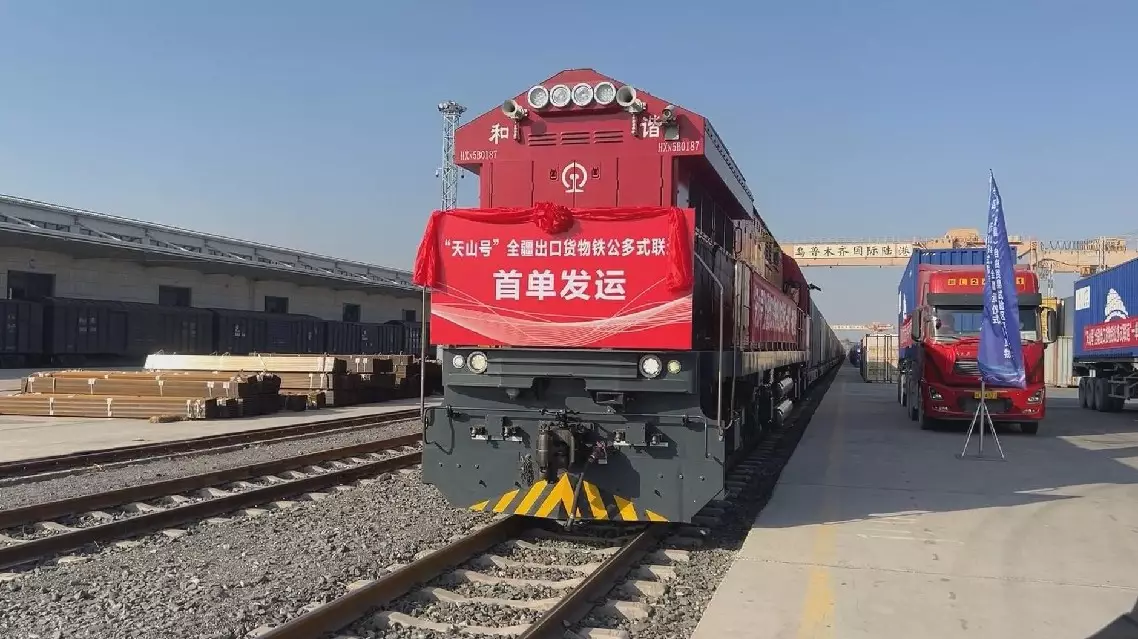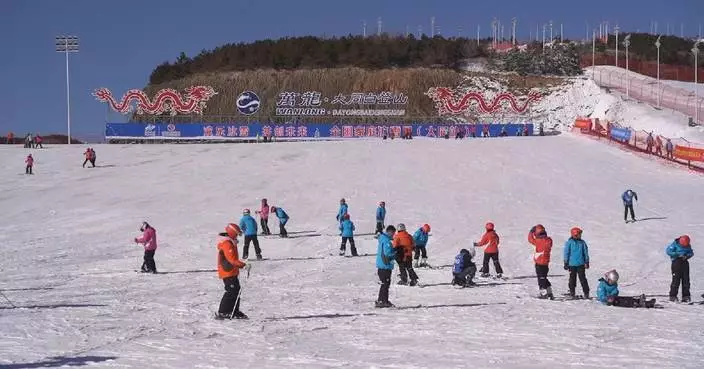China officially launched the pilot rail-road intermodal transport for export goods on Wednesday, as a new move to promote the dual circulation through domestic and international corridors.
The General Administration of Customs of China announced on Sept 20 that it would launch a pilot project, which is applicable to the container cargoes transported by rail or rail-road within China and transported by road after exiting the country.
Under the new transport mode, the cargo carriers only need to submit a multimodal transport application for export goods at the place of customs declaration, and then they can transport the goods to overseas destinations without making any more declarations.
China's major cross-border cargo transport hubs, including Shandong, Shaanxi, Xinjiang and Yunnan, have begun receiving declarations for the pilot service.
At the multimodal transport supervision center of Shanghai Cooperation Organization economic and trade cooperation demonstration zone in Qingdao city, east China's Shandong Province, the first shipment declared for the new rail-road intermodal transport mode has been loaded.
The export shipment includes 246 sets of household dishwashing machines worth 230,000 yuan (about 32,309 U.S. dollars). Customs supervision and inspection can be completed at where the shipping starts.
"Under the new mode, we submit the export declaration to the Jiaozhou Customs. After the customs affixing seals on the containers, the goods will be transported to Sanping Station in Urumqi by rail, and then change to road transportation and leave China from Baketu Port, and finally arrive in Moscow, Russia. During the process, the goods can travel from the start to the destination with only one customs declaration. Compared with the previous service, the rail-road intermodal transport can reduce the cost of reloading operations and port storage by 500 yuan (about 70 U.S. dollars) per container," said Man Kun, chairman of the China-Europe Railway Express Qilu Investment Company under Shandong Hi-Speed Group.
The new service is expected to help rapidly integrate railway and road shipping capacity, improve the connection between different types of shipping, and promote cost reduction and efficiency increase of transportation and logistics.
"The multimodal transport can better optimize the allocation of resources, achieve efficient integration of various transportation resources such as railways and highways, and better supervise the quality and efficiency for unimpeded flow of goods. For companies, this mode enables them to transport goods smoothly throughout the whole process with only one customs declaration, and can shorten the shipping time of export goods by one to two days. At the same time, it can also effectively alleviate the time waste and other problems caused by the crowded train reloading stations," said Song Tao, deputy head of the Jiaozhou Customs under the Qingdao Customs.
The new transport mode can also give full play to the long distance and large capacity of railway transport and the flexibility and door-to-door service of road transport, to achieve rapid transit and seamless connection of goods transportation, reduce the waiting and loading and reloading time of goods, which will greatly improve the overall efficiency of shipping and enhance the resilience and stability of China's transport system.
The pilot project currently covers only rail-road combined transport, and is expected to be expanded to rail-sea, river-sea and land-air intermodal transport if it operates stably.
Northwest China's Xinjiang Uygur Autonomous Region also launched its first freight train under this mode from the Urumqi International Land Port Area on Wednesday. Carrying agricultural machinery, the train will be changed into road transport in Kashgar and enter neighboring Uzbekistan through Irkeshtan Port.
"The General Administration of Customs has developed a supervision system for rail-road intermodal transport. The companies can submit the logistics node information of the whole process of intermodal shipment of goods to the customs through the single window system for international trade or the 95306 digital port system. In terms of this first shipment, we have estimated that the data items needed for export goods declaration have been reduced by about 30 percent, and the shipping time can be saved by about three days, with the port charges lowered by at least 3,000 yuan per container," said Nureli Abdukerim, chief of the logistics supervision section of the Urumqi Customs' port supervision department.
"The intelligent and facilitative supervision of the customs has helped improve logistics quality, reduce cost and increase efficiency, providing a strong guarantee for Urumqi International Land Port Area to build a multimodal logistics hub. In the next step, we will strengthen the cooperation with land ports, increase the promotion of this mode, and continue to innovate the logistics service organization system," said Li Gang, general manager of the Xinjiang International Land Port Group.
The Urumqi-Kashgar-Uzbekistan route has become one of the first lines for the pilot project in the country. The new service is expected to improve the advantages of cargo collection and cargo organizing capacity of Urumqi and attract more multimodal cargo gathering and shipping in the city, which will upgrade the westward channel of the "Belt and Road."

China starts trial rail-road intermodal transport for export goods









